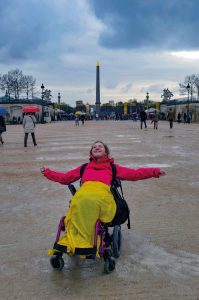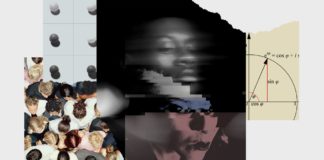“I can clearly remember being up all night for 15 years and thinking there is no end to this, no one can help.” This is the recollection of Gay Grossman who spent every night of those years cradling her daughter in efforts to lessen the unrelenting pain of an undiagnosed disorder. Gay’s daughter, Lilly Grossman, started showing symptoms from the age of 1, characterized by involuntary abnormal movements. On a good night, Lilly would awaken 8-10 times a night fully aware and in pain; on a bad night it was every five minutes.
After an arduous 15-year journey, involving countless trips to doctors all over the country, the Grossman family eventually moved to California to escape cold and icy winters which limited Lilly’s mobility and comfort. “We didn’t think she would have a normal life expectancy as we thought she might have a mitochondrial disease and we wanted to make her life the best we could,” Gay said. The Grossmans also headed to California in search of a diagnosis, hoping that the biotech-heavy communities of San Diego and La Jolla, might yield some answers. They were right.
A diagnosis at last
In 2019, Lilly was diagnosed with ADCY5-related dyskinesia, a hyperkinetic movement disorder, caused by mutations in the ADCY5 gene. That gene has been shown to be important in balancing and maintaining both coordination and locomotion. Lilly was the first one in the world diagnosed with her condition as well as the first one diagnosed through whole genome sequencing at Scripps Translational Sciences Institute. Today, hundreds of people have received the same diagnosis, in part because of the Grossman family’s advocacy through their ADCY5.org advocacy website and social media presence.
 Gay recalls receiving the email from Lilly’s doctor saying they had found something. They found two gene variants, ADCY5 and DOCK3, but there was a lot to learn. Though Grossman was relieved to have a diagnosis one of her first thoughts was “now what?”
Gay recalls receiving the email from Lilly’s doctor saying they had found something. They found two gene variants, ADCY5 and DOCK3, but there was a lot to learn. Though Grossman was relieved to have a diagnosis one of her first thoughts was “now what?”
For most families, however, they don’t even get to that stage. Some families are provided with a ‘descriptive diagnosis’ like cerebral palsy, epilepsy, or dystonia, which uses a patient’s symptoms as a diagnosis in place of a true causal medical explanation. Often, however, they linger in an endless search for an answer that never seems to arrive, in many cases watching their loved one decline, sometimes to the point of death.
Patient, advocate, movie director
During the time Lilly was still looking for her diagnosis, the Grossman family made a connection with Katia Moritz, PhD, chief clinical officer at the Neurobehavioral Institute
specializing in the treatment of severe anxiety disorders and OCD. On the morning of August 24, 2010, Moritz woke up sick. That was 12 years ago, and she is still sick with what she describes as a ‘neuromuscular autoimmune’ kind of illness.
 “It had such clear symptoms–and I know it had nothing to do with emotional issues–and this was the beginning of my own life as an undiagnosed patient,” says Moritz. As she embarked on this journey, she could easily talk to doctors, read the medical literature, and travel to conferences to the best research and medical facilities. “But I realized I was completely lost and alone and could not imagine how other people did this,” she said. So about a year and a half into her process, Moritz decided to go pufkatiablic and share her story.
“It had such clear symptoms–and I know it had nothing to do with emotional issues–and this was the beginning of my own life as an undiagnosed patient,” says Moritz. As she embarked on this journey, she could easily talk to doctors, read the medical literature, and travel to conferences to the best research and medical facilities. “But I realized I was completely lost and alone and could not imagine how other people did this,” she said. So about a year and a half into her process, Moritz decided to go pufkatiablic and share her story.
Like the Grossmans, Moritz moved to a different state where she thought she might be living a shorter life from what she thought was a progressive neuromuscular disease. That fateful decision brought her in contact with two film makers. “We decided together to shoot a documentary for a few months capturing my story of what it was like to be undiagnosed,” recalls Moritz.
Instead, Moritz was just starting on what would become a 9-year epic, capturing the stories of many people and their families who were desperate to talk about their illnesses. “We started with a short online radio show about patient advocacy and were overwhelmed with people asking to participate in sharing their stories,” she says.
Lilly Grossman and her family are among four core families who allowed themselves to be filmed over nine years for the aptly named film Undiagnosed. “We made the movie to tell people the story of the undiagnosed not only to help people understand what it is to live without a diagnosis, but also because the future of medicine relies on the discoveries that we can make on the population that is not diagnosed,” says Moritz.
Losing precious data
One of the main points of the Undiagnosed film, and emphasized by rare disease patient advocates, is that there is no collective way for capturing information on undiagnosed patients. “We don’t even have clear criteria for what an undiagnosed condition is,” says Moritz. “In both the U.S. and worldwide, if someone dies without a diagnosis, nothing is really left of them like a cold case file so one day the family could find an answer. That information is lost with the patient and that’s not just a tragedy for the family but a waste for science.”
A rare exception to that are programs from the National Institutes of Health, such as the Undiagnosed Disease Program (UDP) of the Undiagnosed Disease Network (UDN), an NIH Common Fund initiative that focuses on the most complicated undiagnosed medical cases referred to the NIH Clinical Center in Bethesda, Maryland. “They have clean, beautiful data but it’s only a relatively small group of people,” says Moritz. “There’s the whole world that loses people to an undiagnosed illness and never will have an answer.”
Moritz envisions a much larger national database where all the information of all undiagnosed patients is anonymously stored, can be cross referenced, and made accessible to researchers everywhere.
“The Centers for Disease Control and Prevention mandate that if someone has an unknown communicable disease, it triggers a whole series of events, including mandatory reporting,” she says. “But there is no mandate if a person dies from an unknown cause. We need to get Congress to act to change that.”
A star of the 2022 film festival circuit
One of Moritz’s goals with Undiagnosed is to generate enough publicity and awareness to catch the awareness of Congress and other political bodies that ‘we are missing something right under our eyes that is super precious and important for the future of medicine.’

Toward that end, Undiagnosed is a full feature-length film which has made a significant impact on the film festival circuit this year. Funded by Moritz, the film team, private donors, and disease foundations, it has been accepted to eighteen film festivals in six countries, and most recently won Best Feature Documentary at the Katra Film Series in NY this fall, and Best First Feature at the Toronto International Nollywood Film Festival. It has also been nominated several times for Best Film and Best Film Documentary in several others.
“I’m thrilled the film is doing well,” says Moritz. “For me, it’s important that the movie has been well liked by filmmakers because it validates the message in the movie.” She hopes it will allow her and other rare disease advocates get more visibility and more support. “For us to get to Congress and to get to the right people, we’re going to have to get support for the movie,” she says.
Along with the film festival circuit Moritz is negotiating an arrangement that will allow the film to be screened at more than 24,000 hospitals across the country where it will hopefully be used as an educational tool,” says Moritz. “In fact I want the word ‘undiagnosed’ to become a household name so that if I go to a doctor and say I’m undiagnosed they know exactly what I mean. That is not the case now.”
Moritz herself remains without a diagnosis. Her illness has changed over time, but she considers herself fortunate that she has been able to continue her advocacy work for 12 years and counting. “I’m very lucky and that’s why I made the movie, “she says. “I’ve been able to raise my children and do what I’m doing, while others didn’t have that opportunity.”
For Lilly, an encouraging future
Though not fully depicted in Undiagnosed, Lilly’s story is very promising. Through the Grossman family’s unrelenting commitment and advocacy to finding a diagnosis, years of genetic research at world-class centers, and some good luck, Lilly not only has her diagnosis but also is receiving treatment that has dramatically improved her mobility and speech.

“Because of the research that has been done, she now has a treatment where she not only sleeps all night, but her wheelchair has gone from a power wheelchair with custom supports, straps, and headrest to a small manual chair where she moves herself,” says Grossman. She has gone from needing to be turned in bed to being able to get herself out of bed and get dressed. Her speech is much better. She has graduated from high school and college, lives in her own apartment with support, and is mid-way through a master’s degree program.
“Her treatment is a direct result of finding the gene,” says Grossman adding that genetic testing is the way to get to the source of the disease. “Even if there isn’t a treatment, the genetic diagnosis is so important. Without the genetic diagnosis, we’d still be up all night and Lilly would still be in continual pain.”

For Grossman and Moritz, and countless others like them, their missions remain on advocating not only for themselves but also for other families affected by rare, often undiagnosed diseases, to connect them resources to help in their own journey to answers–and hopefully, effective treatment.
Says Moritz, “To be as effective as possible, we need the support of the community and people interested in undiagnosed and rare diseases.”







